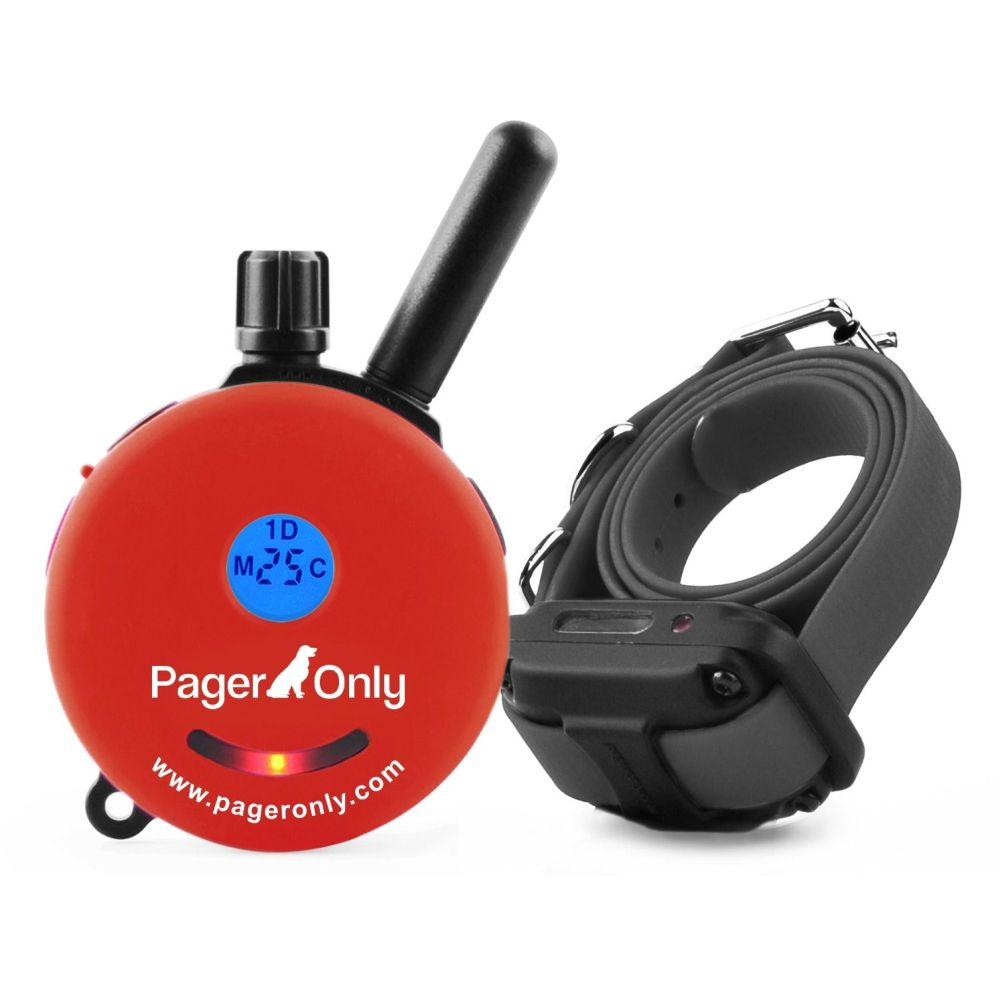Vibration training collars can be the perfect choice when training a dog that is a bit more sensitive. An ultra-sensitive pet might become frightened, stressed, alarmed or confused by an electronic shock collar.
However, the vibrating sensations produced by these collars are gentler and more easily tolerated by sensitive or mild-tempered dogs.
A vibration dog collar can also be a good choice for an abused dog, again because of the milder sensations. Many people also use these collars as part of a training program designed for a blind dog or a deaf dog.
Vibration Collar vs Shock Collar
A vibration collar uses varying levels of vibration whereas a shock collar uses static correction. Although it is a misconception that shock collars give your dog an actual “shock“, vibration collars are considered to be milder in sensation.
Stubborn or Active Dogs
However, even though these collars are frequently used for sensitive pets, it’s also possible to use them on more active or stubborn dogs. Because the collars provide a range of different vibrations, it’s likely that a dog will respond favorably to one or more of the sensations.
However, for very active or stubborn dogs, some vibration collars also include an electric impulse feature. If necessary, the electric impulse feature can be used as a back-up if the dog doesn’t respond to the vibration signals.
Using the Various Vibration Levels
When using a vibration dog collar, it’s important to make good use of the various vibration levels. In many cases, these collars will have a wide range of vibration levels, which are easily controllable using the buttons on the remote control unit.
For example, one button might provide multiple levels of tickle-pressure vibration. But the controller is also likely to have a vibration stimulation level available as well, which can be used as a back-up to replace the constraining sensation of a traditional leash.
In some cases, the remote unit might also have a second button available, providing a wider array of vibration sensations as well as an optional electric impulse sensation.
Using a collar that provides a vibration “pager” button is also a good option for those who prefer using vibration instead of electronic stimulation. In the case of some of these collars, the electronic stimulation is controlled by a rheostat dial, and can be turned down so low that the dog will barely feel a tingle.
This kind of collar system can be quite useful, since the vibration “pager” mode can be utilized for most training needs, but the electronic stimulation is still available if needed. Since some rheostat dial controlled collars have 100 or more stimulation levels, it’s possible to use a variety of the lower levels if needed, even on sensitive dogs.
Uses for Vibration-Only Collars
Vibration dog collars can be used as part of a dog’s training program in much the same way as other electronic collars. When using one of these collars, a quick alert vibration is first given. When the dog feels this vibration, he or she knows to begin a particular response. If necessary, a second vibration can be used if the desired behavior is not performed.
These collars are often used as part of a leash-free training program. During the training process, the dog will quickly learn what the various vibration sensations mean, and will soon dependably respond with the correct response or behavior.
Because of the various array of different vibration sensations, the owner is provided with a wide variety of options. As part of the dog’s training program, different vibration sensations can be used to elicit different behaviors from the dog.
Although the various sensations are easily distinguishable as unique by your dog, all of them are gentle, humane and designed not to produce stress or fearfulness in a dog.
Depending on the desired result, vibration training collars can be used to provide a dog with positive or negative feedback. One collar can even be used to provide both positive encouragement of desired behavior as well as a deterrent to undesired behavior, thanks to the wide array of vibration sensations that are available.
These collars can be especially useful when training a deaf or blind dog, replacing the verbal or visual command signals that he or she would not be able to interpret.
They are also a great way to provide a dog with training consistency, since the signals will be the same, regardless of which owner is operating the control. This can be a big help for dogs who seem to take verbal commands from one person, but not from another.
Ready to Buy? Head on over to our vibration training collars page and use our new product filter to find the perfect collar for you and your dog. You can filter by Brand, Type, Dog Size, Price, Range and different features that you like.




Subscribeto get the latest dog training articles, latest offers & news.
You have Successfully Subscribed!